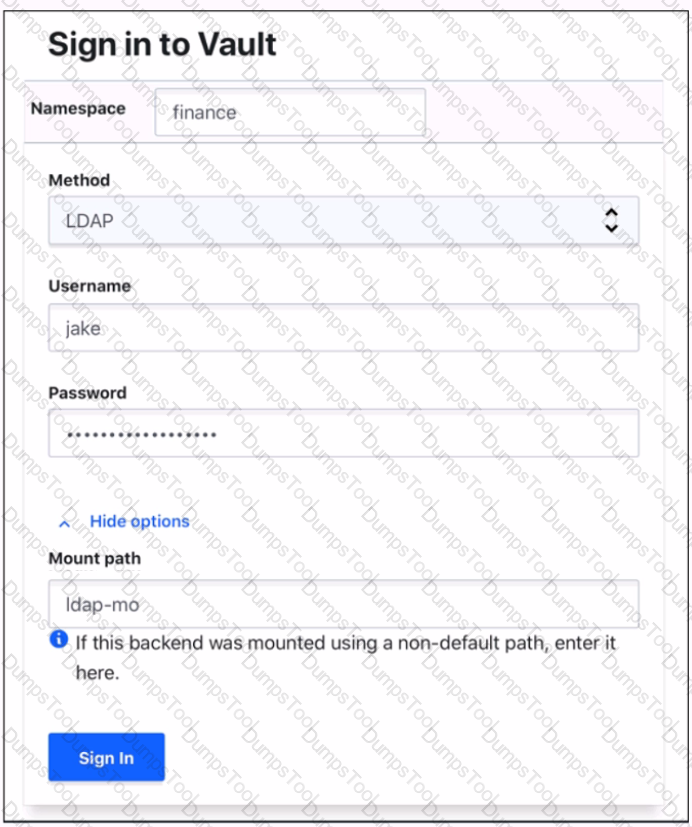Your organization has an initiative to reduce and ultimately remove the use of long lived X.509 certificates. Which secrets engine will best support this use case?
Which of the following vault lease operations uses a lease_id as an argument? Choose two correct answers.
To make an authenticated request via the Vault HTTP API, which header would you use?
You are using Vault's Transit secrets engine to encrypt your data. You want to reduce the amount of content encrypted with a single key in case the key gets compromised. How would you do this?
As a best practice, the root token should be stored in which of the following ways?
Where do you define the Namespace to log into using the Vault Ul?
To answer this question
Use your mouse to click on the screenshot in the location described above. An arrow indicator will mark where you have clicked. Click the "Answer" button once you have positioned the arrow to answer the question. You may need to scroll down to see the entire screenshot.

You have a 2GB Base64 binary large object (blob) that needs to be encrypted. Which of the following best describes the transit secrets engine?
A user issues the following cURL command to encrypt data using the transit engine and the Vault AP:

Which payload.json file has the correct contents?